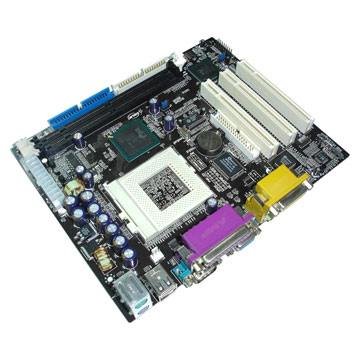Main menu
You are here
A beginner's guide to Motherboards
A beginner's guide to Motherboards

Introduction
We all know that a motherboard is a vital part of every PC. But why? What exactly is it, and what does it do? The more you know about computer components, the better your position as a user, which is where this article strives to help you.
What is a Motherboard?
A motherboard is also known as a main board, system board and logic board. A common abbreviation is ‘mobo'. They can be found in a variety of electrical devices, ranging from a TV to a computer. Generally, they will be referred to as a motherboard or a main board when associated with a complex device such as a computer, which is what we shall look at. Put simply, it is the central circuit board of your computer. All other components and peripherals plug into it, and the job of the motherboard is to relay information between them all. Despite the fact that a better motherboard will not add to the speed of your PC, it is none-the-less important to have one that is both stable and reliable, as its role is vital.
A motherboard houses the BIOS (Basic Input/Output System), which is the simple software run by a computer when initially turned on. Other components attach directly to it, such as the memory, CPU (Central Processing Unit), graphics card, sound card, hard-drive, disk drives, along with various external ports and peripherals.
A more in-depth look at this vital component
There are a lot of motherboards on the market to choose from. The big question is, how do you go about choosing which one is right for you? Different motherboards support different components, and so it is vital you make a number of decisions concerning general system specifications before you can pick the right motherboard.
If you purchase your case before the rest of the components, the first factor to think about concerning motherboards is the size, or form factor. A form factor is a standardised motherboard size. If you think about fitting a motherboard in a case, there are a number of mounting holes, slot locations and PSU connectors. The most popular motherboard form factor today is ATX, which evolved from it's predecessor, the Baby AT, a smaller version of the AT (Advanced Technology) form factor. Generally speaking, nowadays a standard computer will have an ATX form factor motherboard: only special cases require different form factors.
So now you know which size you need, what comes next? The following are all factors you need to consider.
The first important differential is which CPU the board supports. Two of the biggest makes of CPUs at the moment are Intel and AMD, yet you cannot buy motherboards that support the use of either: it will support one or the other, due to physical differences in the connectors. This is often referred to as a type of platform; for example, an ‘Intel platform motherboard' means a motherboard with an Intel CPU. Furthermore, you must choose a specific type of processor; for example, an AMD Athlon 64 or Pentium 4. Therefore, you must choose which CPU you want before you can choose your motherboard. Both Intel and AMD processors are capable of running the same applications, but there are differences in price and performance depending on which one you choose.
source: pcreview

